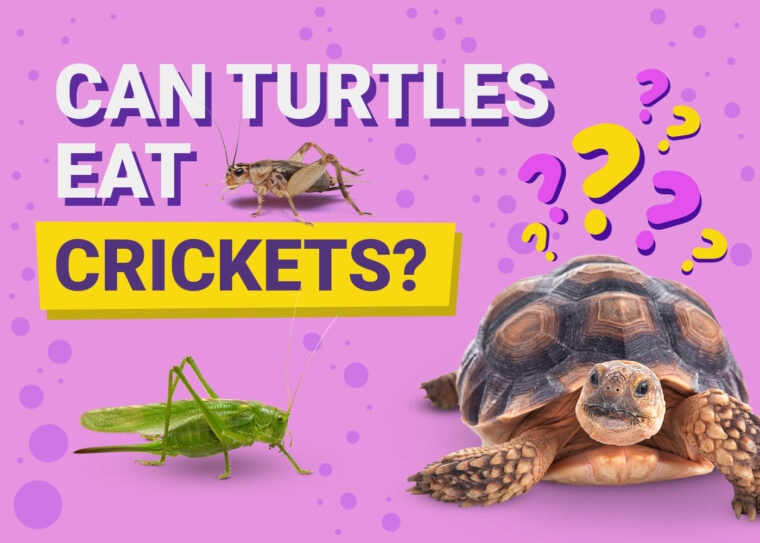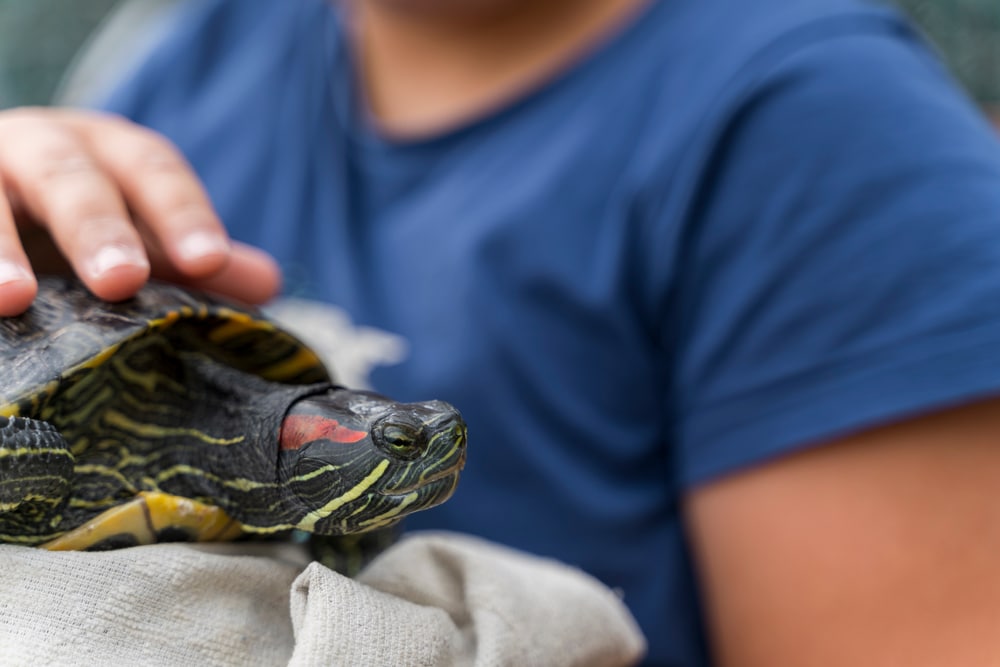
Click to Skip Ahead
If you’re a turtle owner, you may have found yourself wondering if your shelled friend can eat crickets. It’s not uncommon to want to mix up your turtle’s diet, and crickets can seem like an exciting addition to their meals. However, before you start tossing crickets into your turtle’s enclosure, it’s important to know whether they’re safe and healthy for your pet to consume. Generally, crickets can be a great food choice for omnivorous or carnivorous turtles and are safe for them to eat. In this article, we’ll explore more about whether or not turtles can eat crickets and what you need to know before introducing them to your pet’s diet.
Can Turtles Eat Crickets?
Almost all tortoises are herbivores and shouldn’t be fed crickets. Please note that it’s important to consult your veterinarian for understanding your pet turtle’s nutritional needs.
Incorporating insects into a freshwater turtle’s diet is considered universally acceptable by most veterinarians, provided the species in question is omnivorous. Most turtle species are more like carnivores than omnivores when young, therefore, are often offered insects and other sources of animal protein when they are juveniles.
For omnivorous and carnivorous turtles, the inclusion of prey animals into the diet is not just necessary for meeting their nutritional needs, but also an important part of their enrichment. Though such turtles readily eat many different species of animals, it is important to choose healthy options for them. Generally speaking, prey such as baby mice or moths are too high in fat and too low in protein to justify their inclusion in a meaningful nutrition plan. Likewise, many fish contain thiaminase, an enzyme that can lead to the deficiency of thiamin (vitamin B1) if offered in excess.
Thankfully, crickets don’t have these downsides. Most edible crickets have a very high protein rating, and also offer other nutritional benefits in the form of vitamins and minerals 1. However, knowing the precise nutritional composition of crickets is difficult, as their health, species, age, and nutrition determines their nutritional value.
Broadly speaking, crickets should be “gut-loaded” with calcium before they’re offered to your pet, because insects usually lack the calcium necessary for turtles. Gut loading should be done 1-2 days before they’re offered to your turtle.
When fed healthy, gut loaded crickets, it is safe to assume that not only is this safe for pet turtles, but also beneficial for their growth and development.

How Crickets Aid in Digestion for Turtles
Another significant benefit of feeding crickets to your turtle is that they can aid in digestion. Crickets are high in fiber, which helps to keep your turtle’s digestive system healthy and functioning correctly. Additionally, crickets contain chitin, a complex carbohydrate that’s difficult for turtles to digest. This means that when your turtle eats crickets, they must work harder to break down the chitin (polysaccharides) in their digestive system, which can help to keep their digestive system active and healthy.
In addition to aiding in digestion, crickets can also help to prevent constipation in turtles. Constipation is actually a common problem in turtles, particularly in those that aren’t getting enough fiber in their diet. So by feeding your turtle crickets, you can help to ensure that they’re getting the fiber they need to maintain a healthy digestive system and prevent constipation.
Low-Budget Option for Feeding Turtles
Feeding your turtle can be expensive, particularly if you’re buying pre-packaged turtle food. However, feeding your turtle crickets can be a low-cost way to provide them with a nutritious and varied diet. Crickets are widely available and relatively inexpensive, making them an excellent option for pet owners on a budget.
In addition to being cost-effective, feeding your turtle crickets can also help to reduce waste. Many pre-packaged turtle foods contain fillers and other ingredients that turtles really don’t need, which can lead to excess waste. Feeding your turtle crickets allows you to provide them with only the nutrients they require, reducing waste and keeping your turtle’s enclosure clean and hygienic.

The Environmental Benefits of Giving Turtles Crickets
You may not realize this, but in addition to being a cost-effective feeding option for turtles, feeding your turtle crickets can also have environmental benefits. Crickets are an excellent source of protein and are often used as a sustainable food source for humans and animals alike.
Feeding your turtle crickets that are organically raised and sustainably harvested can even help to reduce your turtle’s environmental impact. Additionally, crickets require less space and resources to raise than other common sources of protein. So, by feeding your turtle crickets, you can help to reduce your pet’s environmental impact and promote sustainability.
Take note though that crickets are not a viable stand-alone diet for your pet, and cannot be used as the sole food source for your pet.
How to Incorporate Crickets into Your Turtle’s Diet
If you’re interested in incorporating crickets into your turtle’s diet, there are a few things to keep in mind. First, it’s essential to ensure that the crickets you are feeding your turtle are healthy. It is best to raise your own crickets.
As mentioned before, it is important to “gut-load” your crickets with a high-calcium diet (approximately 8%) 1-2 days before feeding them to your pet. It is also important to remember that your turtle’s nutritional needs will vary and there’s no single guide on how many crickets you should feed your turtle at any given time. Over feeding is just as detrimental as underfeeding your pet, and therefore, it’s best to consult your veterinarian to determine how many crickets you should feed your pet, and at what frequency.

Wrapping Things Up
So yes, your turtle can have crickets in most cases. In fact, it can be a great way to provide them with a nutritious and varied diet. Crickets are an excellent source of protein and other nutrients that omnivorous and carnivorous turtles require.
Additionally, feeding your turtle crickets can be a cost-effective and sustainable food source that can help to reduce waste and environmental impact. So don’t be afraid to head to your local pet store to add these low-cost insects to your turtle’s weekly meal plan.
As always, please remember that the inclusion of any food item into your pet’s diet should only be done after the approval of your veterinarian.
- See Also: How Often Do Turtles Eat?
Featured Image Credit: Robert Lessmann, Shutterstock









